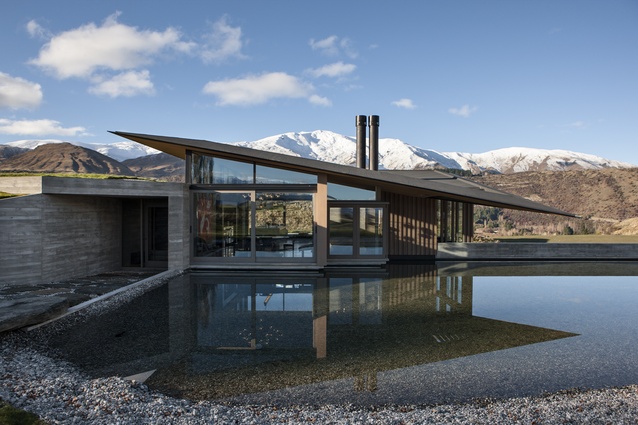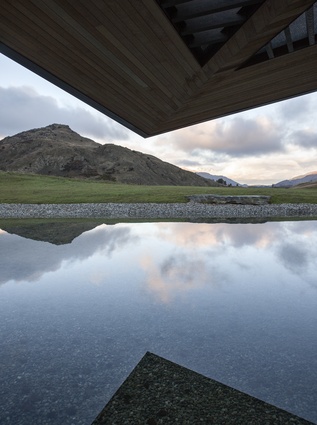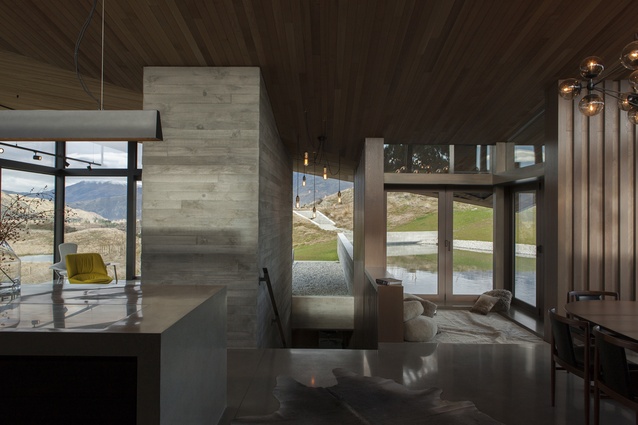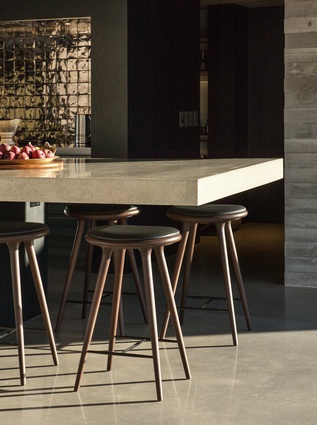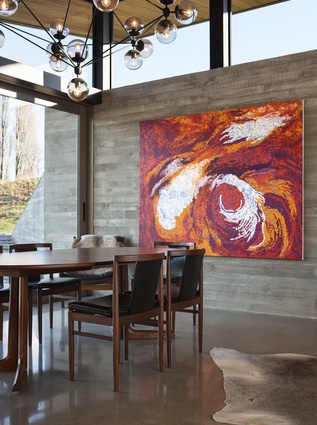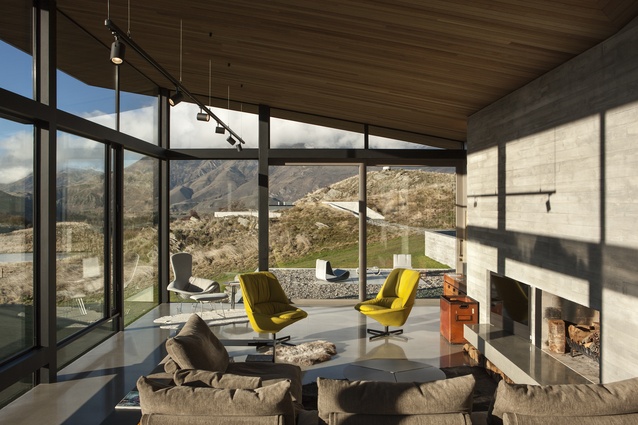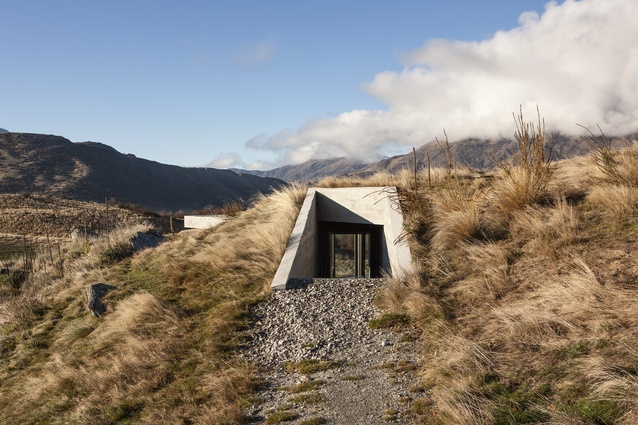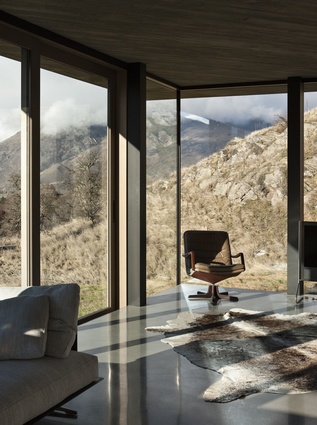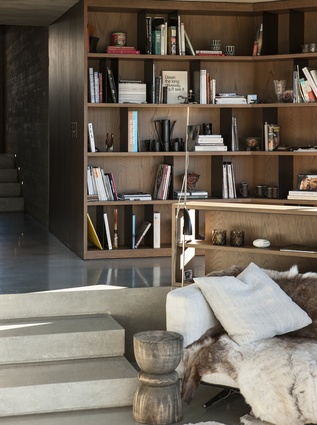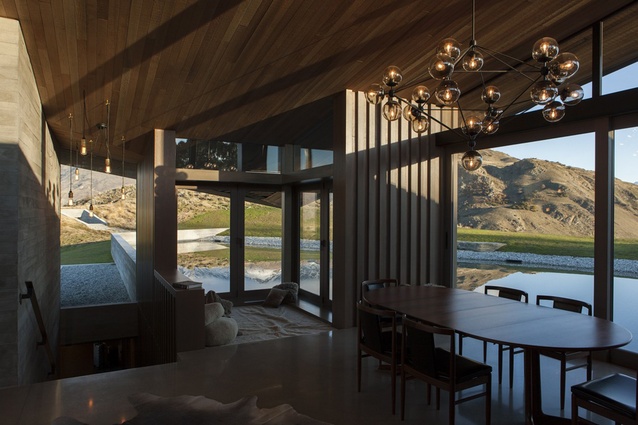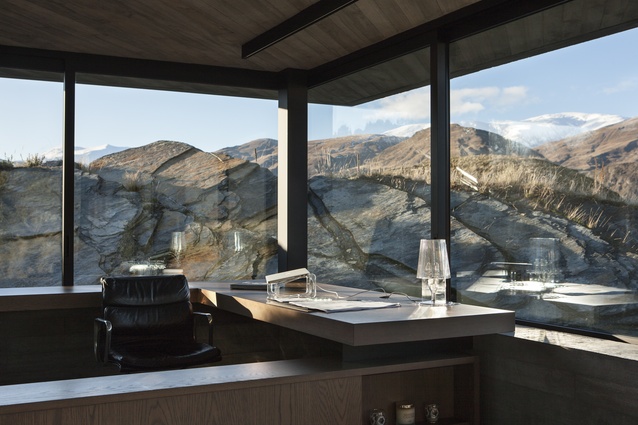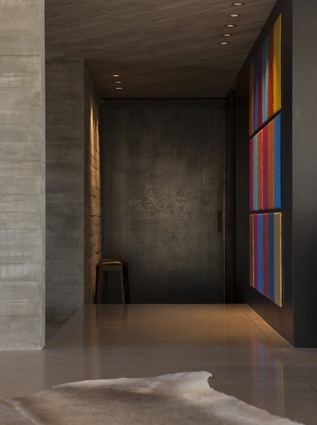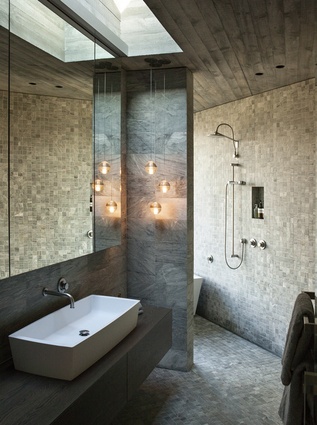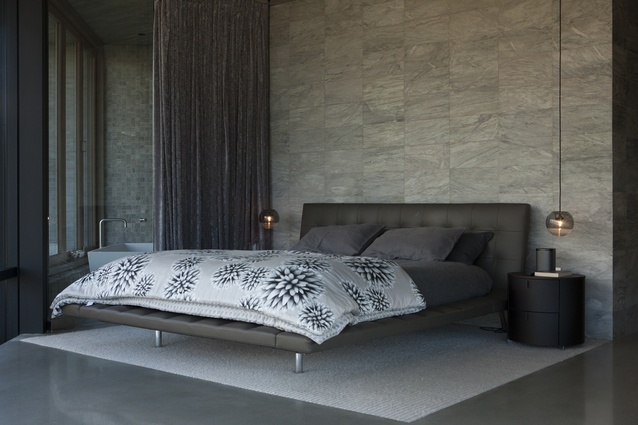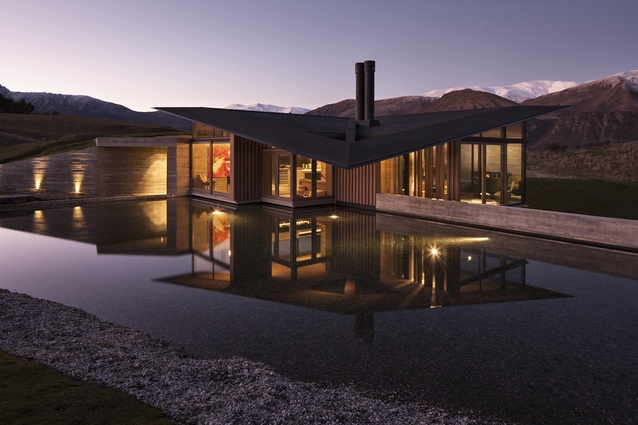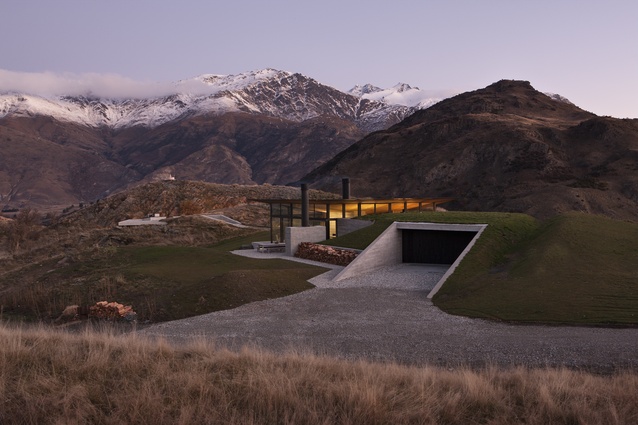Reflections of a landscape
Art and nature have an intimate relationship. Art is often inspired by nature, while it, in turn, can enhance the space it occupies. This is especially so with residential architecture; a marriage of artistic form and function that mediates the relationship between our natural environment and ourselves.
For David Ponting, of Ponting Fitzgerald, that was the intention when designing this home for a client who wanted a sanctuary.
“We started with a brief encapsulated by only four words: let the land speak. With that simplicity came the freedom to ignore the rules, to let the land tell us what opportunities were there,” says Ponting. “There was an element of divination, a process of neutralising predefined ideas and conformity. The more we walked around the site, the more we understood how individual pockets offered different qualities. There were incredible undulations with raw rocks and peaks that we wanted to engage with, that we could build into.
“A realisation emerged that there were two primary places on the site, each with their own set of powerful natural forms; each asking for a building.”
From the parking area on the highest point of the property, the rooflines of two separate and self-contained structures can be spied across the southern perspective.
As one descends, the land folds back to permit views across the valley to Lake Wakatipu in the distance. Like an echo, the man-made pond laps against the guest wing – the largest of the two structures here.

Once inside, you are consumed by endless views framed through glazed walls on three sides, with the remaining northern side tucked into the hill where you first arrived. At the western face, the dining area and bay window seem to float over the pond, enhanced by the fold-back floor-to-ceiling windows that allow you to dip your toes in the water.
At the centre, a large solid kitchen bench looks over a sunken living space with inbuilt sofas nestled nearby an open hearth. Neutral tones, concrete floors, timber and leather enhance the warmth, and mimic the rural surroundings. From here, you can step down into the lower guestrooms or toward the next hill, where a hint of another structure beckons.
It takes a daring attitude to propose a bedroom only accessible by going outside, and an exceptional person to agree. One’s mind immediately jumps to the inconvenience
of putting on a jacket and shoes before going to bed, particularly in the extreme climate of Queenstown.
As you approach the master wing, following the rough lines of the in-situ concrete retaining walls, the earth falls away into a cavity entrance. This space unravels along unconventional contours to a roomy space with far-reaching views. As in the main volume, one wall is embedded into the earth – literally anchoring the structure to the land – and the remaining sides are all glass. A large skylight, cut through the concrete and earth above, allows natural light to penetrate.
A double-ended fireplace halves the living area from the bedroom. Sunken window frames enhance the sense of immediacy. At one end, the outlook includes a slice of cut-away bedrock with varigated shades of violet, rust and silver, with snowcapped mountains beyond. At the other end, there is a rocky hillside, illuminated to reveal the wild sheep that, occasionally, trip across its stony surface at night.
When one is enveloped in nature – the very quality that attracted the client to the site – one can most clearly see the dualities inherent in this project: art/nature, exposure/shelter, stillness/movement. In that moment, one can appreciate the artistic endeavour and the sense of place at the heart of its design.
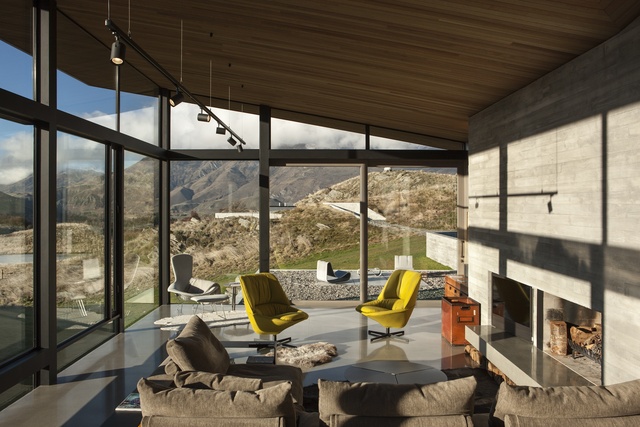
If the master wing represents – and is literally in – the earth, the much larger guest wing represents sky. Its multi-angled roof shoots off in different directions like the wings of paragliders who often dot the horizon on sunny days. At night from one vantage point, the roof imitates a shard of sharp steel piercing the sky, while from another angle the soft timber underside is revealed.
Another perspective suggests an intricately folded origami piece about to take flight.
Yet, as in any relationship of dualities, the conceptual needs to be balanced by function. Ponting has underpinned any fanciful interpretations with substantiality. “We definitively came back to practicality throughout the design, because the process of getting to the end result is still a complex one.
“The dynamics of building an in-situ cast concrete home also brought the skills of Nicoll Thomson Builders into the process earlier than is typical.” According to Ponting this proved essential as the construction methodology became as integral to the programme as the concept itself.
“As with any intrepid architectural process, the boundaries of engineering and material were pushed toward artistry.”
For an interview with David Ponting, click here.



